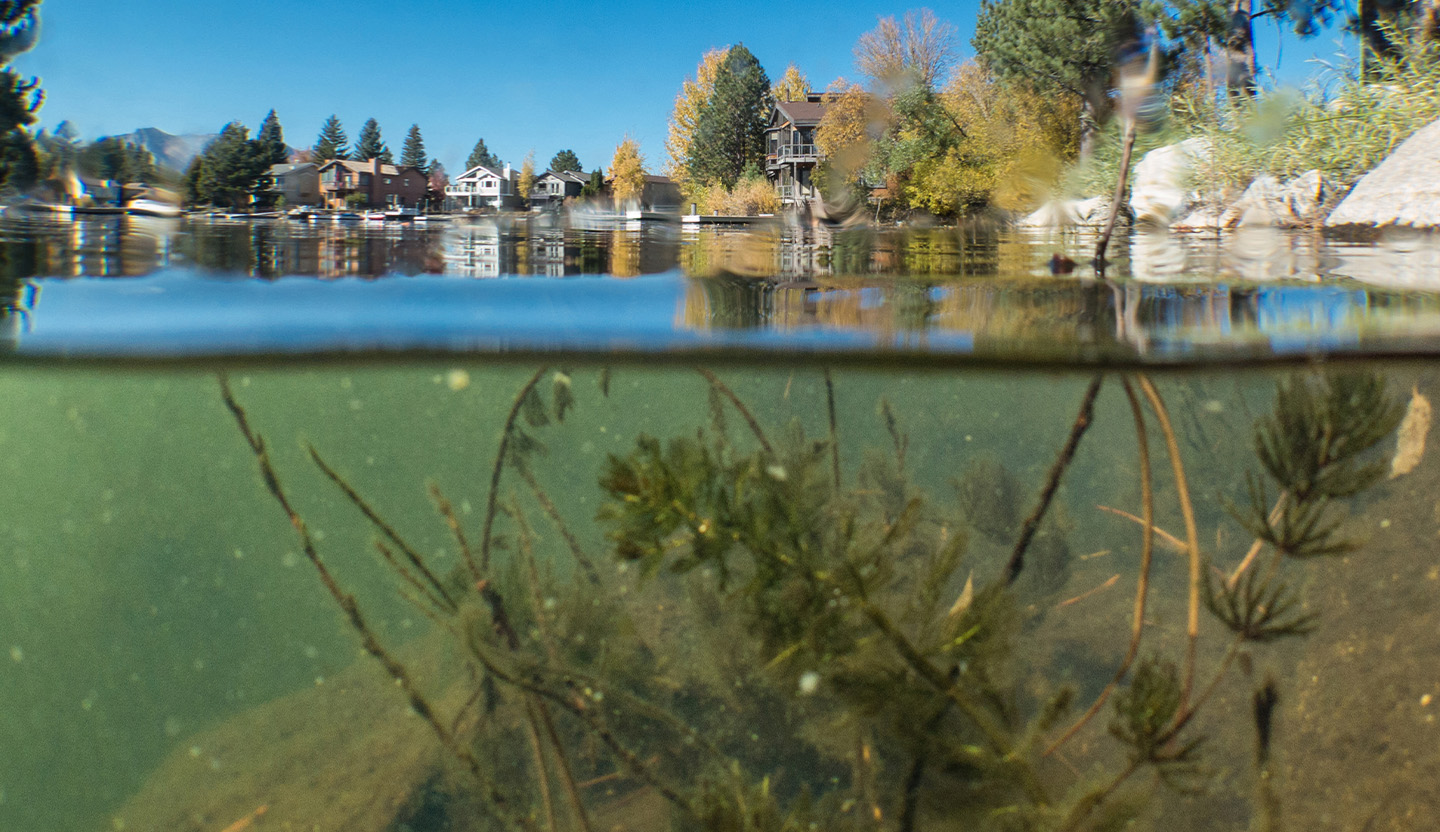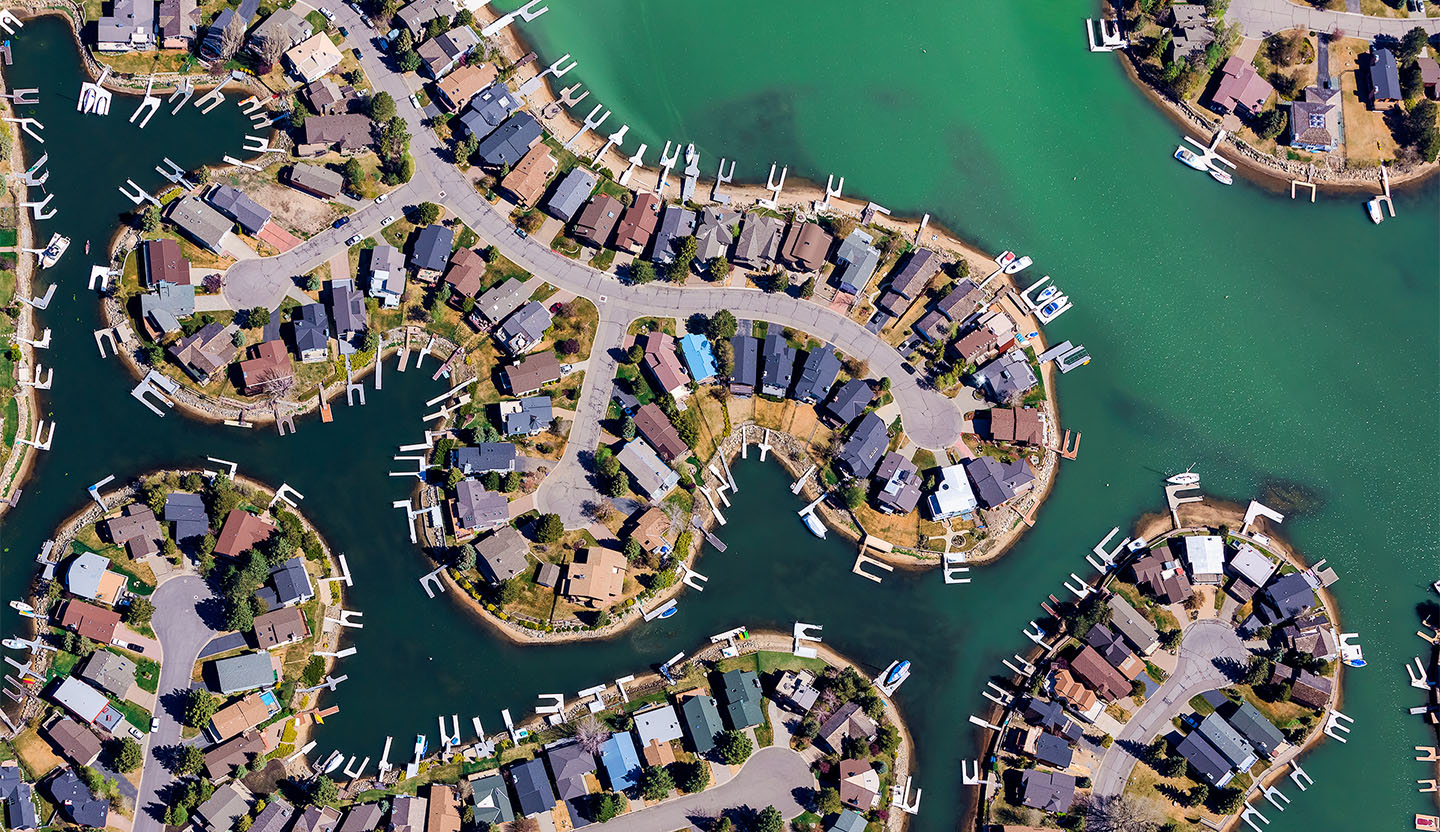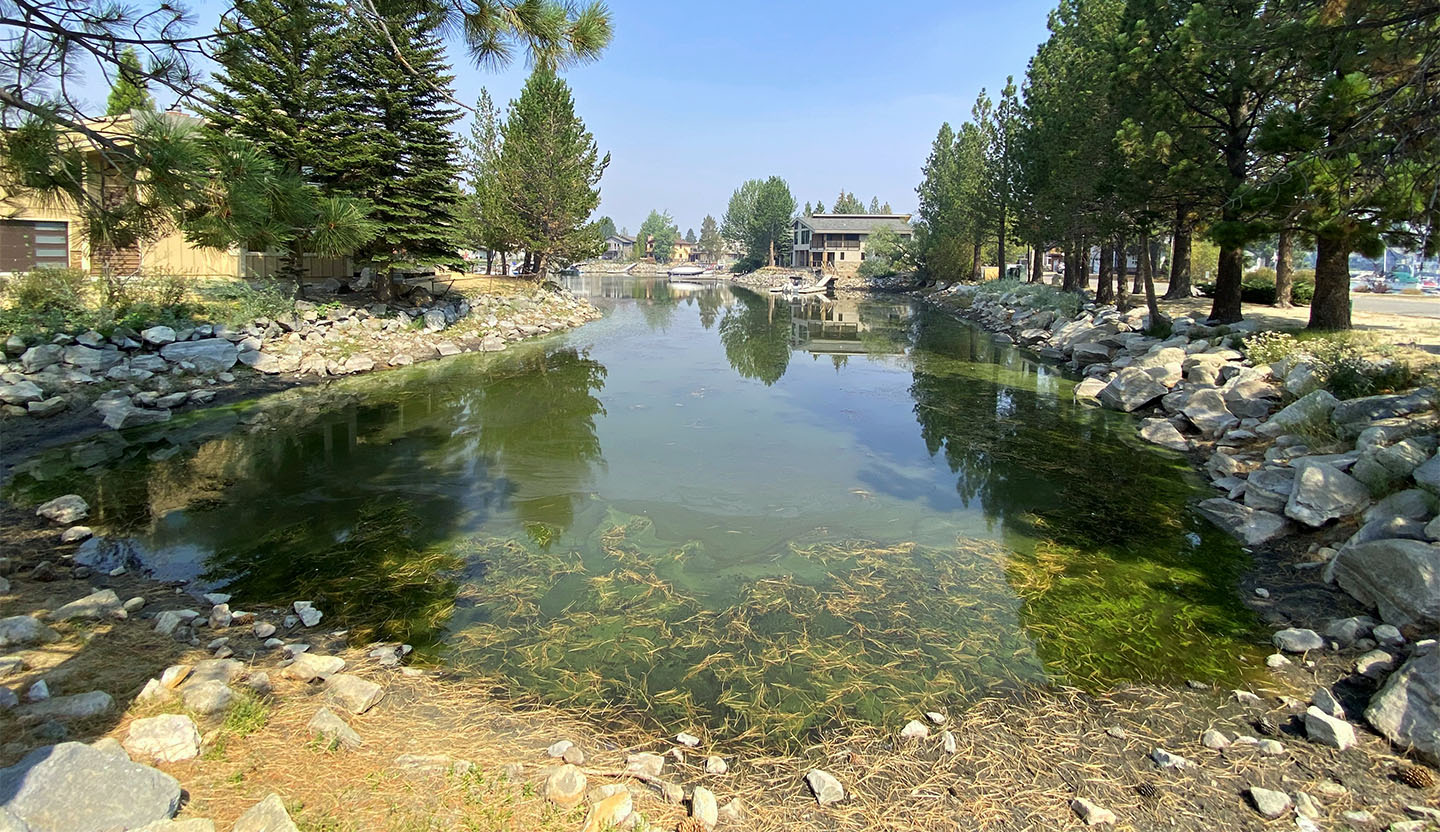REMOVAL: Tackling the Tahoe Keys Complex
Crews are working to remove aquatic invasive weeds from a 100+ acre infestation known as the Tahoe Keys Complex which is growing immediately outside of the Keys in Lake Tahoe proper. The League flagged the growing infestation as a concern and kickstarted the removal process by providing funding. Watch the video above to catch a glimpse of the SCUBA diver-assisted suction dredging.
Explore interactive panoramas of the Tahoe Keys Complex before and after initial treatment. (Images courtesy of Sierra Overhead Analytics.)
The aquatic invasive weed removal work is being performed by Marine Taxonomic Services, with funding and coordination from the League to Save Lake Tahoe, Tahoe Regional Planning Agency, California Tahoe Conservancy, Tahoe Resource Conservation District and Tahoe Keys Property Owners Association.
CONTAINMENT: Following nature’s lead
In 2018, innovative technology was installed in one of the Keys’ boating channels to prevent invasive weeds from being transported into the Lake by passing boats and water currents. The bubble curtain emits a wall of tiny bubbles – mimicking the fishing techniques of humpback whales – to dislodge floating weed fragments and corral them for removal.
After the success of the 2018 pilot project, bubble curtains were installed in the Keys west channel, as well as Elk Point marina. Marine Taxonomic Services installed the bubble curtains with funding and coordination from the League, Tahoe Regional Planning Agency, Tahoe Resource Conservation District and Tahoe Keys Property Owners Association.
The League is now working on targeted studies to assess the efficacy of the bubble curtains and improve the technology.






